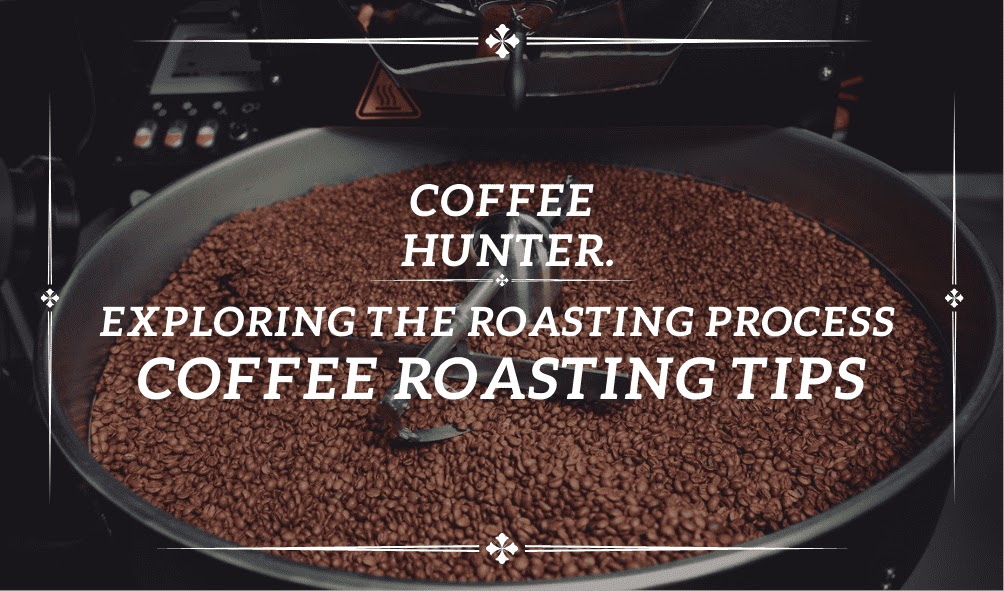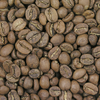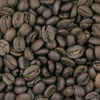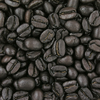 |
| Exploring the Roasting Process: Coffee Roasting Tips |
Coffee is an extensively consumed libation, enjoyed by millions of people worldwide. The perfect cup of coffee is private and depends on an existent's preferences. still, one of the crucial factors in achieving a great cup of coffee is the riding process. Coffee riding is an art and wisdom, and it takes time of experience to master. In this composition, we will explore the coffee riding process and give tips on how to achieve your perfect cup.
The Basics of Coffee Roasting
1.1 What's Coffee Roasting?
Coffee riding is the process of transubstantiating green coffee beans into roasted coffee products. The riding process brings out the aroma, flavor, and color of the coffee beans, and it's a pivotal step in creating the perfect mug of coffee. During riding, chemical responses take place within the beans, causing them to expand and change in both physical and chemical parcels. The performing roasted coffee can be brewed and enjoyed in a variety of ways, from pour-over and drop coffee to espresso and cappuccino.
Coffee roasting is the process of heating green coffee beans to a temperature between 200- 250 °C to produce the flavor and aroma we love in coffee. During this process, a series of chemical responses take place that transfigure the physical and chemical parcels of the coffee beans.
1.2 The Chemistry of Coffee Roasting
The roasting process involves several chemical responses that do contemporaneously. The first stage of roasting involves the Maillard response, which is the response between amino acids and reducing sugars. This response produces flavor and aroma composites that give coffee its characteristic taste and aroma.- Maillard response : This is an anon-enzymatic browning response that occurs between the amino acids and reducing sugars in coffee beans. This response produces hundreds of flavor and aroma composites, including caramel, toffee, and nutty notes.
- Caramelization : This is a thermal corruption response that occurs when coffee beans are hotted to high temperatures. This response produces composites that give coffee its sweet, nutty, and hoarse flavors.
- Pyrolysis : This is a thermal corruption response that occurs at high temperatures in the absence of oxygen. This response produces composites that give coffee its characteristic roasted flavor and aroma.
- declination of Organic Acids : During roasting, organic acids in coffee beans, similar to chlorogenic and quinic acids, degrade, which contributes to the bitterness and acidity of coffee.
The alternate stage of roasting involves pyrolysis, which is the breakdown of organic composites under high heat. During pyrolysis, the coffee beans release carbon dioxide and water vapor, and the organic composites break down to form unpredictable composites that contribute to the aroma and flavor of the coffee.
1.3 The Types of Coffee Roasts
There are three main types of coffee roasts light roast, medium roast, and dark roast. Light roast coffee has a light brown color and a mild flavor. Medium roast coffee has a medium brown color and a balanced flavor. Dark roast coffee has a dark brown color and a bold flavor.Light Roast Coffee
Light roast coffee is the mildest type of coffee roast. It's roasted for a shorter period and at lower temperatures, which results in a lighter color and a milder flavor. The beans have an advanced acidity and a more complex flavor profile, with notes of fruit and flowery undertones. This type of roast is perfect for those who prefer a lighter, more delicate coffee flavor.Medium Roast Coffee
Medium roast coffee is the most common type of coffee roast. It's roasted for a longer period and at advanced temperatures than light roast coffee. This results in a darker color and a more robust flavor. The beans have a balance of acidity and bitterness, with a slightly sweet shadow. This type of roast is perfect for those who want a well-balanced coffee flavor.Dark Roast Coffee
Dark roast coffee is the strongest and boldest type of coffee roast. It's roasted for the longest period and at the loftiest temperatures, which results in a veritably dark color and a strong, bitter flavor. The beans have low acidity and a bold flavor profile, with notes of chocolate and caramel. This type of roast is perfect for those who prefer a strong, violent coffee flavor.French Roast Coffee
French roast coffee is a veritably dark roast that's frequently used for espresso. It's roasted for an extended period at veritably high temperatures, which results in a deep, rich color and a bold, hoarse flavor. The beans have a low acidity and a heavy, full-bodied flavor profile, with notes of dark chocolate and a hoarse shadow. This type of roast is perfect for those who enjoy a bold, violent coffee flavor.The Coffee Roasting Process
2.1 The Equipment demanded Coffee Roasting
To roast coffee, you'll need many essential pieces of the outfit. The most important piece of the outfit is a coffee rotisserie. There are numerous different types of coffee broilers on request, including barrel broilers, fluid bed broilers, and air broilers. Each type has its advantages and disadvantages, so it's important to choose the type that stylishly fits your requirements and budget.
In addition to a roaster, you'll also need a scale to measure the coffee beans, a thermometer to cover the temperature during riding, and a timekeeper to track the riding time. You may also want to invest in a cooling charger or an addict to cool the roasted coffee beans snappily after they're finished riding.
It's important to note that coffee roasting can be a messy process, so you may want to invest in a high-quality vacuum or air filtration system to keep your workspace clean and free of dust and debris. Eventually, do not forget to invest in high-quality green coffee beans from estimable sources to ensure the most stylish possible roast.
2.2 The Steps in Coffee Roasting
The coffee riding process involves several steps, including preheating, loading the beans, covering the roast, and cooling the beans. Preheating the roaster ensures that the beans are roasted unevenly. Loading the beans into the roaster is the first step in the riding process. Monitoring the roast involves observing the beans' color and aroma and conforming to the temperature and tailwind as necessary. Cooling the beans stops the roasting process and prevents the beans from over-roasting.
Then are the steps involved in coffee roasting :
- Green bean evaluation : The first step is to estimate the quality of green coffee beans. This involves examining the beans for blights, similar to earth, nonentity damage, or other defects.
- Bean selection Once : the beans have been estimated, the roaster will elect the beans they want to use grounded on their flavor profile, origin, and roast position.
- Preheating the roaster : needs to be preheated to the right temperature before adding the beans.
- Loading the beans : Once the roaster is preheated, the beans are added to the roasting chamber.
- Monitoring the roast : The beans are constantly covered to ensure they're roasting unevenly and not developing any unwanted flavors.
- First crack : After several twinkles of roasting, the beans will begin to crack, releasing brume and feasts. This is known as the first crack.
- Roast development : The beans are roasted until they reach the asked roast position, which can range from light to dark.
- Cooling the beans : Once the beans have been roasted to perfection, they're snappily cooled to help further roasting and to lock in their flavor and aroma.
- Storage : The roasted beans are stored in watertight holders to maintain their newness until they're ready to be brewed and enjoyed.
Each step in the coffee roasting process is critical to achieving the perfect roast and bringing out the unique flavors and aromas of each bean. As an expert in coffee roasting, I'm always seeking to ameliorate my fashion and produce the most stylish possible coffee for my guests.
2.3 The Importance of Thickness in Coffee Roasting
thickness is a pivotal aspect of coffee roasting. As a coffee roaster, it's essential to ensure that each batch of coffee beans is roasted to the same position of thickness so that the performing coffee has the same flavor and aroma every time. thickness is critical for maintaining the quality of your coffee and for erecting a pious client base.
Here are many reasons why thickness is so important in coffee roasting :
- Quality Control : thickness ensures that each batch of coffee is of the same quality, with the same flavor and aroma profile. This is important for maintaining the character of your coffee and for icing that guests admit the same high-quality product every time they buy from you.
- client Satisfaction : thickness is critical for icing that guests are satisfied with the coffee they receive. However, guests may come frustrated and start looking for their coffee away, If your coffee tastes different from one batch to the coming.
- Brand Identity : thickness is an essential element of erecting a strong brand identity. By constantly producing high-quality coffee with the same flavor and aroma profile, you can establish your brand as a dependable and secure source of coffee.
- effectiveness : thickness can also help to ameliorate the effects of your roasting process. By roasting each batch of coffee to the same position of thickness, you can reduce the quantum of time and resources demanded to acclimate the roasting process for each batch.
Thickness is critical in coffee roasting. It ensures that each batch of coffee is of the same quality, helps to maintain client satisfaction, establishes a strong brand identity, and can ameliorate the effects of the roasting process. As a coffee rotisserie, it's essential to prioritize thickness in your roasting process to achieve the most stylish possible results.
Tips for Achieving Your Perfect Cup of Coffee
3.1 Choosing the Right Coffee Beans
Choosing the right coffee beans is pivotal to producing high-quality coffee. As an expert in coffee roasting, I believe that the quality of the beans is the most important factor in determining the final flavor and aroma of the coffee. Then are some tips for choosing the right coffee beans :
- Look for high-quality beans : The stylish coffee beans are grown at high mounds, where they can develop complex flavors and aromas. Look for beans that are labeled as specialty grade or decoration grade.
- Choose beans that are fresh : Newness is crucial when it comes to coffee beans. Look for beans that have been roasted within the last many weeks, as aged beans can become banal and lose their flavor.
- Consider the origin of the beans : Different regions produce different types of coffee beans, each with its unique flavor profile. Some of the most popular coffee bean origins include Ethiopia, Colombia, and Brazil.
- Determine the roast level : Coffee beans can be roasted in different situations, from light to dark. Each roast level produces a different flavor profile, so it's important to choose the right repast position for the type of coffee you want to make.
By following these tips and choosing the right coffee beans, you can produce succulent, high-quality coffee that will satisfy indeed the most sapient coffee alkies
3.2 Grind Your Beans Properly
Grinding your coffee beans properly is one of the most important ways in achieving a perfect cup of coffee. The grind size affects the rate at which water excerpts the flavors from the coffee, so it's essential to use the right grind size for your brewing system. For illustration, a coarse grind is suitable for a French press, while a forfeiture grind is better for espresso. Using a quality purr grinder can help insure a harmonious grind size, which is pivotal for a balanced and scrumptious cup of coffee. Always acclimate your grind size according to your taste preferences and the brewing system you are using.
Here are some tips on how to grind your beans properly :
- Choose the right grinder : For stylish results, use a purr grinder rather than a blade grinder. Burr grinders give a harmonious grind size, which is essential for making great coffee.
- Know your grind size : Different brewing styles bear different grind sizes. For example, a French press requires a coarse grind, while an espresso machine requires a forfeiture grind. Make sure you know what grind size you need for your brewing system.
- Measure your beans : Use a digital scale to measure your coffee beans before grinding. This will ensure that you use the right quantum of coffee for your brewing system.
- Grind just before brewing : Grind your beans just before you brew your coffee. This will help save the flavor and aroma of the coffee.
- Store your beans properly : Store your coffee beans in a watertight vessel in a cool, dry place. Avoid storing them in the freezer or refrigerator, as this can damage the beans.
3.3 Use the Right Water
Using the right water is pivotal for brewing a stylish cup of coffee. Water makes up over 98 of your cup of coffee, so it's important to use clean, high-quality water that will not intrude on the flavor of your beans.
When it comes to coffee, you want to use water that's free of any contaminations or pollutants that could affect the taste of your brew. This means using water that's filtered or purified to remove any chlorine, minerals, or other substances that can affect the flavor.
Additionally, the temperature of the water is also important. The ideal temperature for brewing coffee is between 195 and 205 degrees Fahrenheit( 90 to 96 degrees Celsius). However, it can beget the coffee to taste bitter and burnt, while water that's too cool can affect a weak and under- uprooted cup If the water is too hot.
By using the right water and icing it at the correct temperature, you can help ensure that your coffee tastes stylish and is free from any unwanted flavors or aromas.
3.4 Experiment with Different Roasts
Experiment with
Different roasts can dramatically change the flavor profile of coffee. For example, a light roast will generally have a more acidic, bright flavor with subtle fruit or floral notes. A medium roast will have a balance of acidity and agreeableness, with flavors of caramel and chocolate. A dark roast will have a stronger, more bitter flavor with hints of smokiness and dark chocolate.
To find the roast that stylishly suits your taste, I recommend trying a variety of roasts from different regions. Each region will have its unique flavor profile, so it's important to try to find what you like stylish. Ethiopia, Colombia, and Brazil are each great regions to start with, as they produce some of the world's stylish coffee beans. Try brewing each roast with the same brewing system to get a fair comparison, and do not be hysterical to take notes on the flavors and aromas you witness. With a bit of trial, you are sure to find the perfect roast to suit your taste.
3.5 Store Your Coffee Properly
A proper storehouse is essential in maintaining the newness and quality of your coffee. Store your coffee in a watertight vessel in a cool, dry place down from the sun.
A proper storehouse of coffee is pivotal to maintaining its newness and flavor. Coffee is sensitive to air, humidity, and light, which can beget it to go banal snappily. A watertight vessel, similar to a mason jar or a coffee storehouse barrel, will cover the coffee from exposure to air and humidity. A cool, dry place down from the sun is a stylish position for a coffee storehouse, as exposure to heat and light can beget the coffee to deteriorate. By storing your coffee duly, you can ensure that it stays fresh and scrumptious for as long as possible.
In conclusion, the art and wisdom of coffee roasting is a fascinating subject that requires a time of experience, and fidelity to master. The roasting process is critical in bringing out the unique flavors, aromas, and characteristics of each coffee bean. By understanding the chemistry behind the riding process and following the proper way, you can achieve a great cup of coffee every time.
Whether you're a coffee nut looking to perfect your morning brew or a coffee rotisserie seeking to enhance your craft, the tips and ways outlined in this composition can help you achieve your pretensions. Flashback to choose high-quality beans, grind them duly, use the right water, try with different roasts, and store your coffee properly.
I can attest to the significance of thickness and attention to detail in achieving the perfect cup of coffee. By following these tips and ways and experimenting with different roasts, you can discover the unique flavors and aromas of coffee and enjoy a truly exceptional cup of coffee every time.
Resources
- The Specialty Coffee Association: https://sca.coffee/ :The Specialty Coffee Association is a global organization that promotes excellence in the coffee industry. Their website is a great resource for coffee roasters and enthusiasts, with a wealth of information on coffee cultivation, processing, roasting, brewing, and more.
- Coffee Chemistry: https://www.coffeechemistry.com/ :Coffee Chemistry is a website dedicated to exploring the science behind coffee. They have a range of articles and resources on topics such as coffee roasting, brewing, flavor chemistry, and more.
- Perfect Daily Grind: https://www.perfectdailygrind.com/ :Perfect Daily Grind is an online publication that covers all aspects of the coffee industry, from farming and roasting to brewing and serving. Their articles are written by industry experts and offer valuable insights into the world of coffee.
- Roast Magazine: https://www.roastmagazine.com/ :Roast Magazine is a publication that focuses specifically on coffee roasting. They offer a range of articles and resources on topics such as roasting techniques, equipment, green coffee sourcing, and more.
- Coffee Research: https://coffee-research.org/ :Coffee Research is a non-profit organization that conducts research and provides education on coffee. Their website offers a range of resources on topics such as coffee chemistry, processing, and sensory analysis.


















0 Comments